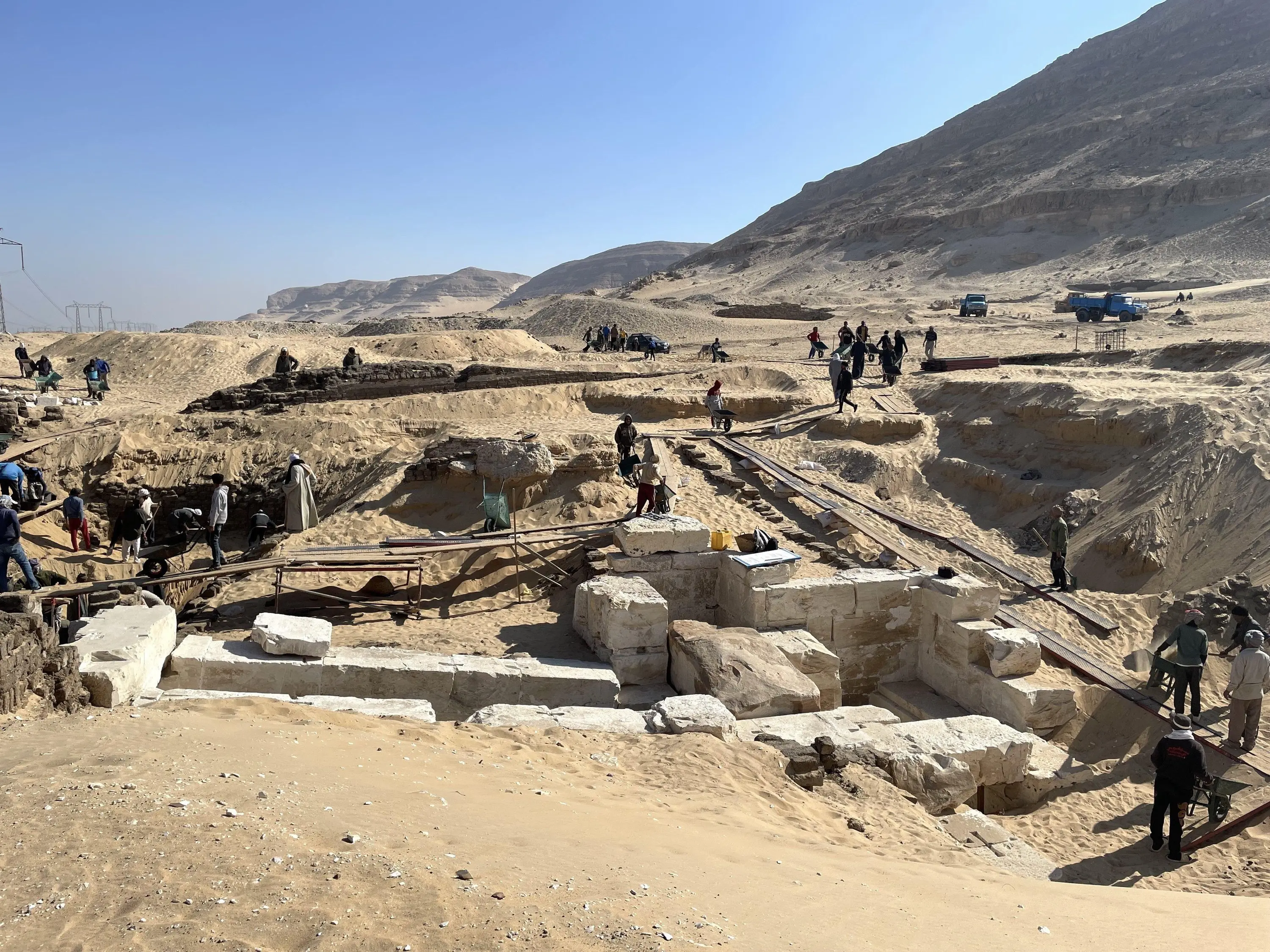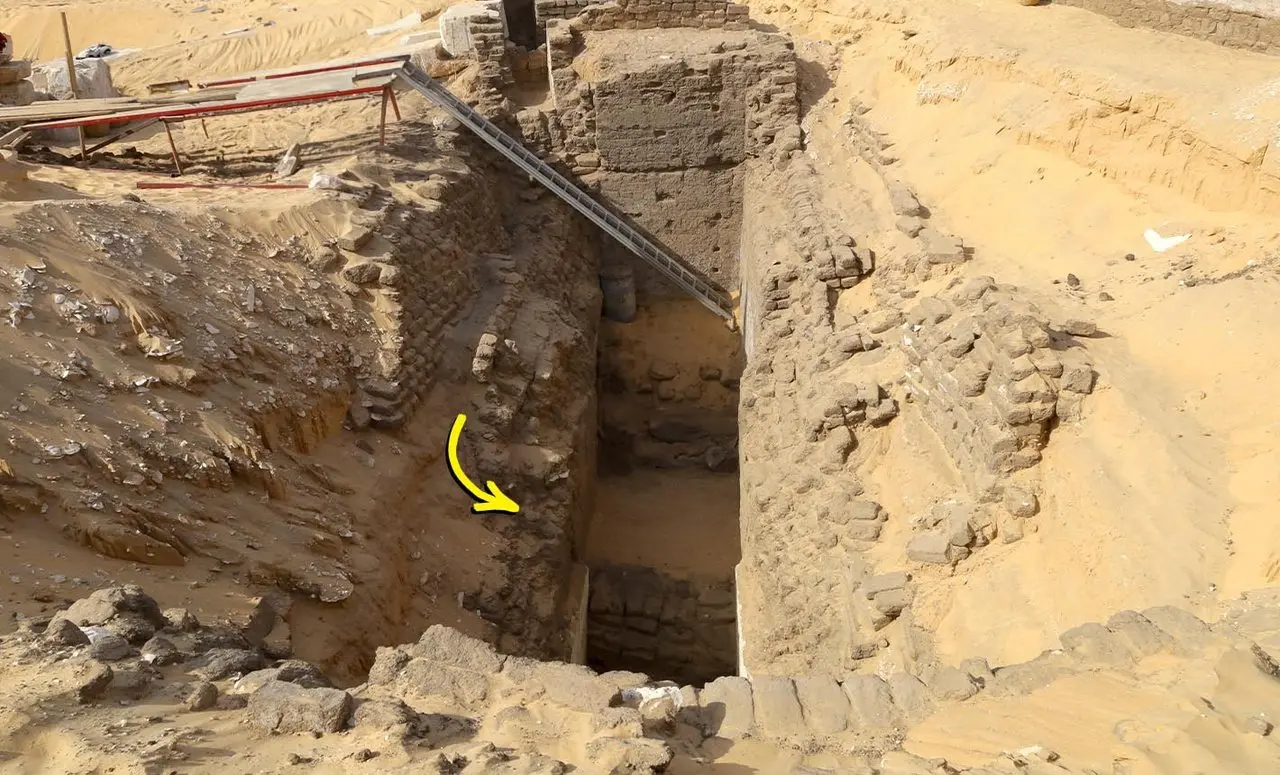Deep beneath the ancient sands of Abydos, a 3600-year-old tomb has emerged from the shadows, uncovered by a team of researchers from the Penn Museum and Egyptian archaeologists. Announced March 27, 2025, this extraordinary discovery at one of Upper Egypt’s most sacred cities is igniting excitement and raising fresh questions about a murky chapter in Egypt’s past: the elusive Abydos Dynasty.
Located six miles from the Nile River, Abydos has long been revered as a gateway to the afterlife, a place where the god Osiris, ruler of the netherworld, was believed to rest. For centuries, it served as a royal necropolis, a hallowed ground where Egypt’s earliest pharaohs chose to be buried. But this latest find—a massive limestone burial chamber unearthed nearly 23 feet underground in January 2025—offers a new window into the Second Intermediate Period (1640-1540 B.C.), a turbulent era of rival kingdoms and transformative change.

What makes this tomb intriguing? For starters, it’s large—much larger than other known tombs from the same dynasty, with a decorated entryway, multiple rooms and soaring 16-foot-high mudbrick vaults. The team, working with the Egyptian Ministry of Tourism and Antiquities, uncovered it at Anubis Mountain, a sprawling necropolis steeped in myth and history. Yet despite its grandeur, the tomb guards a frustrating secret: the identity of the pharaoh it once housed remains unknown. Hieroglyphic texts in vibrant yellow bands once proclaimed his name, but ancient tomb robbers left them too damaged to decipher. “The king’s name was originally recorded in painted scenes on plastered brickwork that decorated the entrance to the limestone burial chamber,” explains Dr. Josef Wegner, Penn Museum curator of the Egyptian Section and leader of the excavation. “However, ancient tomb robbers damaged the hieroglyphic texts, and not enough survives to read the king’s name.”


Still, the clues are tantalizing. The tomb’s design echoes that of another Abydos Dynasty ruler, King Seneb-Kay, whose resting place Dr. Wegner’s team uncovered in 2014. Could this unnamed pharaoh be one of Seneb-Kay’s predecessors? Archaeologists are eyeing two possible candidates—kings Senaib and Paentjeni, both known to have left monuments at Abydos but whose tombs remain unfound. Paintings inside, depicting goddesses Isis and Nephthys, hint at the ruler’s significance, yet the mystery lingers like dust in the desert air.
This discovery isn’t just about one tomb—it’s part of a bigger story. The Abydos Dynasty, a short-lived line of kings who ruled part of Upper Egypt during a time of political upheaval, has long puzzled historians. The new find, located near the tomb enclosure of pharaoh Neferhotep I from the earlier 13th Dynasty, suggests Anubis Mountain was a bustling hub of royal burials across centuries. “This discovery is a new window to understanding the origins of the enigmatic Abydos Dynasty,” Dr. Wegner says, his enthusiasm palpable. And he’s not stopping here—excavations will continue throughout 2025, using tools like magnetometry and photogrammetry to map a 10000-square-meter stretch of this ancient landscape.


What’s even more exciting is how this work bridges past and present. The team isn’t just digging up history; they’re preserving it. “Ongoing excavations also include protection, site management, and conservation of these structures,” Dr. Wegner notes. “That is a part of our commitment to the site in cooperation with the Egyptian Ministry of Tourism and Antiquities.” Already, the tombs of King Seneb-Kay and King Senwosret III have been opened as visitable monuments, with more to come. It’s a chance for everyone to step into ancient Egypt and feel the weight of its mysteries firsthand.
As the Penn Museum continues its decades-long journey at Abydos—a project that began in 1967—this latest find reminds us how much remains uncovered. Who was this nameless king? What stories did he leave in those crumbling hieroglyphs? The answers may still lie beneath the sands, waiting for the next curious soul to ask the right question.



Leave a Comment